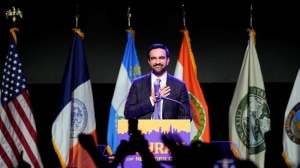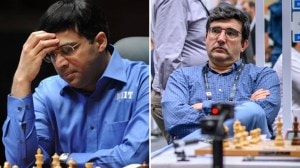Through the smokescreen
Fifty-five-old Devi Ram was diagnosed with cancer of the larynx on February 28 this year. Since then, he's been going for radiation therap...

Fifty-five-old Devi Ram was diagnosed with cancer of the larynx on February 28 this year. Since then, he’s been going for radiation therapy to the Institute Rotary Cancer Hospital (IRCH) at the Delhi-based All India Institute of Medical Sciences (AIIMS) five times a week every three weeks. When Ram’s throat tumour started interfering with his breathing and led to fainting spells, he had to undergo a tracheostomy to make breathing easier.
The hole in his throat is clearly visible, which Ram has to cover while speaking to make speech possible. Still, he was caught smoking bidis last week while waiting his turn at the radiation centre.
Having smoked bidis since he was 25 years old, Ram naturally finds it difficult to quit. Thirty years after he lit is first bidi, his chances of survival are about 60 per cent. And even if Devi Ram survives, less than 5 per cent chance still exists of his cancer recurring after two years.
“If we know one sure cause of cancer, it’s tobacco,” says Dr G. K. Rath, Head, IRCH, where about 300 cancer patients are treated in the OPD every day.Smoking and/or chewing tobacco not only cause cancers of the oral cavity, larynx, pharynx, cheek, palate, lip and oesophagus, but also of the lung. Cancers of the bladder and pancreas are also associated with tobacco consumption. Oral cancers remain the most common cancers among men in India, followed by lung cancer. The two together account for 70 per cent of all cancers in men. Significantly, among women among whom tobacco consumption is lower, the most common cancers are cancers of the cervix and breast.
Tobacco consumption remains the largest cause of cancer among men, since both chewing tobacco or/and smoking can cause oral cancers, while smoking is the leading cause of lung cancer.
The diagnosis of oral cancer is easier than other cancers because the lesions or tumours in the head and neck area are usually visible and can be examined externally. The obvious symptoms of oral cancer are ulcers in the oral cavity that do not heal, pain, difficulty in opening the mouth, a foul smell from the mouth because of the cancerous growth, and appearance of glands in the neck.
Bizarre though this may sound, smokers diagnosed with oral cancer are luckier than those diagnosed with lung cancer, for survival rates for lung cancer patients are almost dismal. “The course of lung cancer is very aggressive and the tumour progresses very quickly,” says Rath. “The first treatment has to be the very best, because the patient has very little time,” he adds. Adds Poonam Chandra, a pathologist at Delhi’s Sitaram Bhartia Institute and Research Centre, “Lung cancer is usually detected at an advanced stage the third or terminal and most people diagnosed don’t live longer than a year.”
The common symptoms of lung cancer are cough, expectoration spotted with blood, fever, appetite and weight loss, and shortness of breath. “A pathological diagnosis is essential because the symptoms are often confused with tuberculosis,” says Siddhartha Nanda, Senior Resident, IRCH.
That’s what happened with Mohammad Sani, who spent six months running from pillar to post before he was diagnosed with lung cancer. “I had a persistent cough and pain in the waist, which was diagnosed first as pneumonia, then tuberculosis and finally, as drug-resistant tuberculosis,” he recalls. He was treated for everything for six months for the doctor suspected lung cancer and sent Sani for a confirmatory diagnosis.
Confirmatory diagnosis for lung cancer include chest X-Rays, blood tests and the exaination of the abdomen.
Chandra has registered a steady increase in lung cancer cases at her clinic in the past five years, a little due to increasing pollution but primarily due to smoking. “Pollution is not a known cause, tobacco is,” says Rath emphatically.
In the face of growing scientific evidence, tobacco companies in the West have been forced to acknowledge the addictive nature of nicotine and the health hazards associated with tobacco consumption. Not only are statutory warnings direct like Smoking causes lung cancer and emphysema’ but the link between tobacco and cancer is also recognised and clearly mentioned in the official website of Philip Morris, the makers of Marlboro and the largest tobacco company in the US. It reads: “There is an overwhelming medical and scientific consensus that cigarette smoking causes lung cancer, heart disease, emphysema and other serious diseases in smokers. Smokers are far more likely to develop serious diseases, like lung cancer, than non-smokers. There is no safe’ cigarette..” It further admits that “cigarette smoking is addictive… (and) it can be very difficult to quit smoking.”
Cancer is just one of the 25 tobacco-related diseases known today, says World Health Organisation (WHO). Nicotine is known to increase blood pressure, exacerbate asthma, cause impotence and infertility, low birth-weight babies and increase serum carbon monoxide. Long-term use can lead to heart attack, stroke and cancer. The World Bank estimates that 500 million people alive today will eventually be killed by tobacco. “Coronary artery diseases, chronic lung diseases due to tobacco are five times more common as tobacco-related cancers,” says Dr Sharad G. Vaidya, General Secretary, Goa Cancer Society.
The WHO further classifies smoking as an addiction stronger than that to drugs like heroin, marijuana and cocaine. “Even after people have been diagnosed with cancer, they find it difficult to quit,” says Nanda, who finds quite a few patients carrying bidi and cigarette packs when they come for treatment.
What’s also worrying is the increase in children being diagnosed with oral submucosa fibrosis, a pre-oral cancer stage, largely because of children getting hooked to chewing tobacco at a younger age. Says Dr S. S. Shastri, Head of Community Oncology, Tata Memorial Hospital: “Surveys in Mumbai have shown that 28 per cent of boys in Classes VIII-X use upto two to five packets of gutka a day.” A report, Tobacco and Youth in South East Asia by the Mumbai-based Tata Institute Of Fundamental Research, found that at 8 years, the tobacco initiation age was lowest in India.
In his effort to decrease tobacco consumption in Goa, Vaidya is arming students with knowledge which encourages them to persuade their parents and those around them to kick the habit. Vaidya’s sustained efforts have helped tobacco education to become part of the standard curriculum at Goan schools. Against the national trend, cigarette consumption has fallen 30 per cent in Goa in the last decade, he claims.
Bans also work, like banning smoking in the workplace has been found to help employees kick the habit. A survey published in the May issue of the American Journal of Public Health reported that more than 26 per cent smokers who were prohibited from smoking at work had quit in the past six months, compared with about 19 per cent smokers in communities with no anti-smoking ordinance. Smoke-free offices were more likely to exist in communities with laws that restrict smoking, the investigators found.
Lowering risk continues to be the most efficient way to prevent disease, as treatment is painful and long. It involves multi-modality methods, with oncologists using a combination of radiotherapy, chemotherapy and surgery. Radiotherapy takes six-seven weeks of treatment, and the patient has to visit the hospital five times a week every three weeks to get his dose of high-energy Gamma or X-Rays.
With economies like India dependent on the revenue generated from tobacco, the WHO has used its constitutional mandate to initiate the Framework Convention on Tobacco Control, which will help member countries strengthen their tobacco-control programmes. It’s time everyone realised that since there are health gains to be made from giving up tobacco consumption at any age, quitting remains a healthier, cheaper option.



- 01
- 02
- 03
- 04
- 05




























